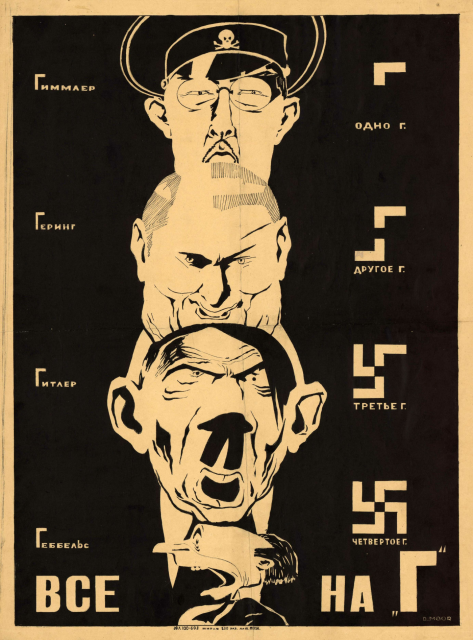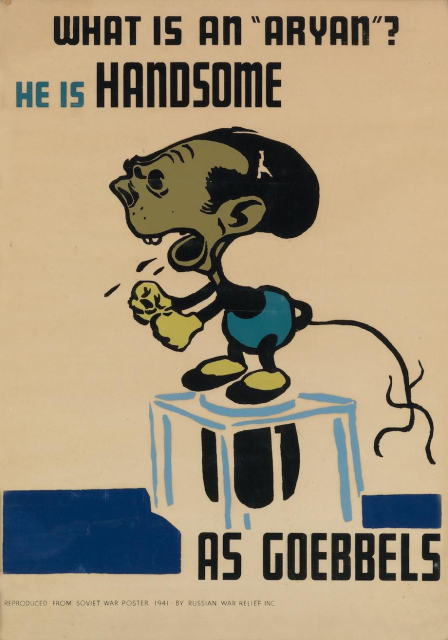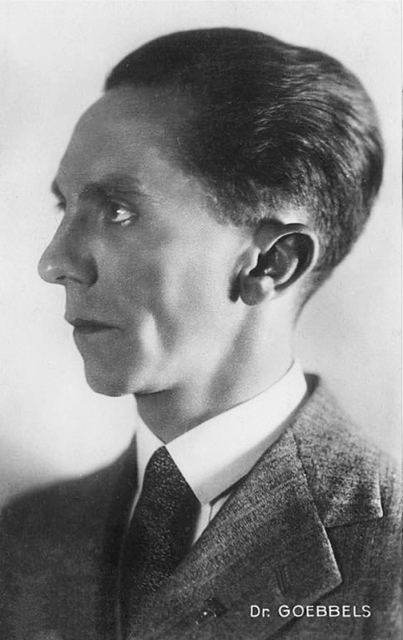Mark Dominus (陶敏修)
mjd@pobox.com

Archive:
| 2025: | JFMAMJ |
| JAS | |
| 2024: | JFMAMJ |
| JASOND | |
| 2023: | JFMAMJ |
| JASOND | |
| 2022: | JFMAMJ |
| JASOND | |
| 2021: | JFMAMJ |
| JASOND | |
| 2020: | JFMAMJ |
| JASOND | |
| 2019: | JFMAMJ |
| JASOND | |
| 2018: | JFMAMJ |
| JASOND | |
| 2017: | JFMAMJ |
| JASOND | |
| 2016: | JFMAMJ |
| JASOND | |
| 2015: | JFMAMJ |
| JASOND | |
| 2014: | JFMAMJ |
| JASOND | |
| 2013: | JFMAMJ |
| JASOND | |
| 2012: | JFMAMJ |
| JASOND | |
| 2011: | JFMAMJ |
| JASOND | |
| 2010: | JFMAMJ |
| JASOND | |
| 2009: | JFMAMJ |
| JASOND | |
| 2008: | JFMAMJ |
| JASOND | |
| 2007: | JFMAMJ |
| JASOND | |
| 2006: | JFMAMJ |
| JASOND | |
| 2005: | OND |
In this section:
Subtopics:
| Mathematics | 245 |
| Programming | 99 |
| Language | 95 |
| Miscellaneous | 75 |
| Book | 50 |
| Tech | 49 |
| Etymology | 35 |
| Haskell | 33 |
| Oops | 30 |
| Unix | 27 |
| Cosmic Call | 25 |
| Math SE | 25 |
| Law | 22 |
| Physics | 21 |
| Perl | 17 |
| Biology | 16 |
| Brain | 15 |
| Calendar | 15 |
| Food | 15 |
Comments disabled
Thu, 30 Apr 2020
Geeky boasting about dictionaries
Yesterday Katara and I were talking about words for ‘song’. Where did ‘song’ come from? Obviously from German, because sing, song, sang, sung is maybe the perfect example of ablaut in Germanic languages. (In fact, I looked it up in Wikipedia just now and that's the example they actually used in the lede.)
But the German word I'm familiar with is Lied. So what happened there? Do they still have something like Song? I checked the Oxford English Dictionary but it was typically unhelpful. “It just says it's from Old German Sang, meaning ‘song’. To find out what happened, we'd need to look in the Oxford German Dictionary.”
Katara considered. “Is that really a thing?”
“I think so, except it's written in German, and obviously not published by Oxford.”
“What's it called?”
I paused and frowned, then said “Deutsches Wörterbuch.”
“Did you just happen to know that?”
“Well, I might be totally wrong, but yeah.” But I looked. Yeah, it's called Deutsches Wörterbuch:
The Deutsches Wörterbuch … is the largest and most comprehensive dictionary of the German language in existence. … The dictionary's historical linguistics approach … makes it to German what the Oxford English Dictionary is to English.
So, yes, I just happened to know that. Yay me!
Deutsches Wörterbuch was begun by Wilhelm and Jakob Grimm (yes, those Brothers Grimm) although the project was much too big to be finished in their lifetimes. Wilhelm did the letter ‘D’. Jakob lived longer, and was able to finish ‘A’, ‘B’, ‘C’, and ‘E’. Wikipedia mentions the detail that he died “while working on the entry for ‘Frucht’ (fruit)”.
Wikipedia says “the work … proceeded very slowly”:
Hermann Wunderlich, Hildebrand's successor, only finished Gestüme to Gezwang after 20 years of work …
(This isn't as ridiculous as it seems; German has a lot of words that begin with ‘ge-’.)
The project came to an end in 2016, after 178 years of effort. The revision of the Grimms’ original work on A–F, planned since the 1950s, is complete, and there are no current plans to revise the other letters.
[Other articles in category /lang] permanent link
Tue, 28 Apr 2020
Urquhart, Rosse, and Browne
[ Warning: I abandoned this article in 2008 and forgot that it
existed. I ran across it today and decided that what I did write was
worth publishing, although it breaks off suddenly. ]
A couple of years ago, not long before I started this blog, I read some of the works of Sir Thomas Browne. I forget exactly why: there was some footnote I read somewhere that said that something in one of Jorge Luis Borges' stories had been inspired by something he read in Browne's book The Urn Burial, which was a favorite of Borges'. I wish I could remember the details! I don't think I even remembered them at the time. But Thomas Browne turned out to be wonderful. He is witty, and learned, and wise, and humane, and to read his books is to feel that you are in the company of this witty, learned, wise, humane man, one of the best men that the English Renaissance has to offer, and that you are profiting thereby.
The book of Browne's that made the biggest impression on me was Pseudodoxia Epidemica (1646), which is a compendium of erroneous beliefs that people held at the time, with discussion. For example, is it true that chameleons eat nothing but air? ("Thus much is in plain terms affirmed by Solinus, Pliny, and others...") Browne thinks not. He cites various evidence against this hypothesis: contemporary reports of the consumption of various insects by chameleons; the presence of teeth, tongues, stomachs and guts in dissected chameleons; the presence of semi-digested insects in the stomachs of dissected chameleons. There's more; he attacks the whole idea that an animal could be nourished by air. Maybe all this seems obvious, but in 1672 it was still a matter for discussion. And Browne's discussion is so insightful, so pithy, so clear, that it is a delight to read.
Browne's list of topics is fascinating in itself. Some of the many issues he deals with are:
- That Crystall is nothing else but Ice strongly congealed;
- That a Diamond is made soft, or broke by the blood of a Goate;
- That Misseltoe is bred upon trees, from seeds which birds let fall thereon;
- That an Elephant hath no joints;
- That Snayles have two eyes, and at the end of their hornes;
- That men weigh heavier dead then alive;
- Of the pictures of Adam and Eve With Navels [a classic question, that; Saint Augustine took it up in City of God];
- Of the pictures of our Saviour with long haire;
- Of the falling of salt;
- That Children would naturally speak Hebrew [another question of perennial interest. I have heard that Frederick the Great actually made the experiment and raised children in isolation to see if they would learn Hebrew];
- Of the blacknesse of Negroes;
- That a man hath one Rib lesse then a woman;
- Of Crassus that never laughed but once;
- Of the wandring Jew;
- Of Milo, who by daylie lifting a Calfe, attained an ability to carry it being a Bull.
Well, I digress. To return to that list of topics I quoted, you might see "of the blacknesse of Negroes", and feel your heart sink a little. What racist jackass thing is the 1646 Englishman going to say about the blackness of negroes?
Actually, though, Browne comes out of it extremely well, not only much better than one would fear, but quite well even by modern standards. It is one of the more extensive discourses in Pseudodoxia Epidemica, occupying several chapters. He starts by rebutting two popular explanations: that they are burnt black by the heat of the sun, and that they are marked black because of the curse of Ham as described in Genesis 9:20–26.
Regarding the latter, Browne begins by addressing the Biblical issue directly, and on its own terms, and finds against it. But then he takes up the larger question of whether black skin can be considered to be a curse at all. Browne thinks not. He spends some time rejecting this notion: "to inferr this as a curse, or to reason it as a deformity, is no way reasonable". He points out that the people who have it don't seem to mind, and that "Beauty is determined by opinion, and seems to have no essence that holds one notion with all; that seeming beauteous unto one, which hath no favour with another; and that unto every one, according as custome hath made it natural, or sympathy and conformity of minds shall make it seem agreeable."
Finally, he ends by complaining that "It is a very injurious method unto Philosophy, and a perpetual promotion of Ignorance, in points of obscurity, ... to fall upon a present refuge unto Miracles; or recurr unto immediate contrivance, from the insearchable hands of God." I wish more of my contemporaries agreed.
Another reason I love this book is that Browne is nearly always right. If you were having doubts that one could arrive at correct notions by thoughtful examination of theory and evidence, Pseudodoxia Epidemica might help dispel them, because Browne's record of coming to the correct conclusions is marvelous.
Some time afterward, I learned that there was a rebuttal to Pseudodoxia Epidemica, written by a Dr. Alexander Rosse. (Arcana Microcosmi, ... with A Refutation of Doctor Brown's VULGAR ERRORS... (1652).) And holy cow, Rosse is an incredible knucklehead. Watching him try to argue with Browne reminded me of watching an argument on Usenet (a sort of pre-Internet distributed BBS) where one person is right about everything, and is being flamed point by point by some jackass who is wrong about everything, and everyone but the jackass knows it. I have seen this many, many times on Usenet, but never as far back as 1652.
This is the point at which I stopped writing the article in 2008. I had mentioned the blockheaded Mr. Rosse in an earlier article. But I have no idea what else I had planned to say about him here.
Additional notes (April 2020)
- I mentioned “the table of contents from Richard Waller's
Posthumous Works of Robert Hooke”. I had mentioned Waller
previously, in connection with Hooke's measurement of the rate at
which a fly beats its wings. The Waller book is
available on the Internet Archive, but
it does not have a table of contents! I realize I had actually been
thinking of Hooke’s Philosophical Experiments and
Observations, edited by William Derham, which in some editions, does have a table
of contents. The Derham book made a couple of other appearances
in this blog in the early days.
- I no longer have any idea who Urquhart was, or what I had planned to
say about him. Searching for him in conjunction with Browne I find he was Sir Thomas Urquhart, a contemporary of
Browne's. There is a Wikipedia
article about Urquhart. Like his better-known contemporary John
Wilkins, he tried to design a universal language in which the meaning
of a word could be inferred from its spelling.
- I learned that Rosse was
the target of sarcastic mockery in Samuel Butler's Hudibras:
There was an ancient sage philosopher
It seems that Rosse was a noted dumbass even in his own lifetime.
Who had read Alexander Ross over. - John Willcock's biography of Urquhart says “Ross himself is now only
known to most of us from the mention made of him in
Hudibras”, and that was in 1899.
- Thomas Browne is the source of the often-quoted suggestion that:
What song the Sirens sang, or what name Achilles assumed when he hid himself among women, though puzzling questions, are not beyond all conjecture.
(It appears in his book Hydrotaphia, or Urn Buriall.) This hopeful talisman has inspired many people over the centuries to continue their pursuit of such puzzling questions, sometimes when faced with what seems like a featureless wall of lost history. - A few years later I revisited Milo, who by daylie lifting a Calfe, attained an ability to carry it being a Bull.
[Other articles in category /book] permanent link
Sun, 26 Apr 2020I ran into this album by Jools Holland:

What do you see when you look at this? If you're me, you spend a few minutes wondering why there is a map of Delaware.
[ Addendum 20250203: Another example, this time a little closer to home. ]
[Other articles in category /misc] permanent link
Fri, 24 Apr 2020
Tiers of answers to half-baked questions
[ This article is itself somewhat half-baked. ]
There's this thing that happens on Stack Exchange sometimes. A somewhat-clueless person will show up and ask a half-baked question about something they are thinking about. Their question is groping toward something sensible but won't be all the way there, and then several people will reply saying no, that is not sensible, your idea is silly, without ever admitting that there is anything to the idea at all.
I have three examples of this handy, and I'm sure I could find many more.
One recent one concerns chirality (handedness) in topology. OP showed up to ask why a donut seems to be achiral while a coffee cup is chiral (because the handle is on one side and not the other). Some people told them that the coffee cup is actually achiral and some others people told them that topology doesn't distinguish between left- and right-handed objects, because reflection is a continuous transformation. (“From a topological point of view, no object is distinguishable from its mirror image”.) I've seen many similar discussions play out the same way in the past.
But nobody (other than me) told them that there is a whole branch of topology, knot theory, where the difference between left- and right-handed objects is a major concern. Everyone else was just acting like this was a nonissue.
This category theory example is somewhat more obscure.
In category theory one can always turn any construction backward to make a “dual” construction, and the “dual” construction is different but usually no less interesting than the original. For example, there is a category-theoretic construction of “product objects”, which generalizes cartesian products of sets, topological product spaces, the direct product of groups, and so on. The dual construction is “coproduct objects” which corresponds to the disjoint union of sets and topological spaces, and to the free product of groups.
There is a standard notion of an “exponential object” and OP wanted to know about the dual notion of a “co-exponential object”. They gave a proposed definition of such an object, but got their proposal a little bit wrong, so that what they had defined was not the actual co-exponential object but instead was trivial. Two other users pointed out in detail why their proposed construction was uninteresting. Neither one pointed out that there is a co-exponential object, and that it is interesting, if you perform the dualization correctly.
(The exponential object concerns a certain property of a mapping !!f :A×B\to C!!. OP asked insead about !!f : C\to A× B!!. Such a mapping can always be factored into a product !!(f_1: C\to A)×(f_2: C\to B)!! and then the two factors can be treated independently. The correct dual construction concerns a property of a mapping !!f : C\to A\sqcup B!!, where !!\sqcup!! is the coproduct. This admits no corresponding simplification.)
A frequently-asked question is (some half-baked variation on) whether there is a smallest positive real number. Often this is motivated by the surprising fact that !!0.9999\ldots = 1!!, and in an effort to capture their intuitive notion of the difference, sometimes OP will suggest that there should be a number !!0.000\ldots 1!!, with “an infinite number of zeroes before the 1”.
There is no such real number, but the question is a reasonable one to ask and to investigate. Often people will dismiss the question claiming that it does not make any sense at all, using some formula like “you can't have a 1 after an infinite sequence of zeroes, because an infinite sequence of zeroes goes on forever.”. Mathematically, this response is complete bullshit because mathematicians are perfectly comfortable with the idea of an infinite sequence that has one item (or more) appended after the others. (Such an object is said to “have order type !!\omega + 1!!”, and is completely legitimate.) The problem isn't with the proposed object itself, but with the results of the attempt to incorporate it into the arithmetic of real numbers: what would you get, for example, if you tried to multiply it by !!10!!?
Or sometimes one sees answers that go no further than “no, because the definition of a real number is…”. But a better engagement with the question would recognize that OP is probably interested in alternative definitions of real numbers.
In a recent blog article I proposed a classification of answers to certain half-baked software questions (“Is it possible to do X?”):
- It surely could, but nobody has done it yet
- It perhaps could, but nobody is quite sure how
- It maybe could, but what you want is not as clear as you think
- It can't, because that is impossible
- I am not able rightly to apprehend the kind of confusion of ideas that could provoke such a question
and I said:
Often, engineers will go straight to #5, when actually the answer is in a higher tier. Or they go to #4 without asking if maybe, once the desiderata are clarified a bit, it will move from “impossible” to merely “difficult”. These are bad habits.
These mathematically half-baked questions also deserve better answers. A similar classification of answers to “can we do this” might look like this:
- Yes, that is exactly what we do, only more formally. You can find out more about the details in this source…
- Yes, we do something very much like that, but there are some significant differences to address points you have not considered…
- Yes, we might like to do something along those lines, but to make it work we need to make some major changes…
- That seems at first like a reasonable thing to try, but if you look more deeply you find that it can't be made to work, because…
- I am not able rightly to apprehend the kind of confusion of ideas that could provoke such a question
The category theory answer was from tier 4, but should have been from tier 2. People asking about !!0.0000…1!! often receive answers from tier 5, but ought to get answers from tier 4, or even tier 3, if you wanted to get into nonstandard analysis à la Robinson.
There is a similar hierarchy for questions of the type “can we model this concept mathematically”, ranging from “yes, all the time” through “nobody has figured that out yet” and “it seems unlikely, because”, to “what would that even mean?”. The topological chirality question was of this type and the answers given were from the “no we can't and we don't” tiers, when they could have been from a much higher tier: “yes, it's more complicated than that but there is an entire subfield devoted to dealing with it.”
This is a sort of refinement of the opposition of “yes, and…” versus “no, but…”, with the tiers something like:
- Yes, and…
- Yes, but…
- Perhaps, if…
- No, but…
- No, because…
- I am embarrassed for you
When formulating the answer to a question, aiming for the upper tiers usually produces more helpful, more useful, and more interesting results.
[ Addendum 20200525: Here's a typical dismissal of the !!0.\bar01!! suggestion: “This is confusing because !!0.\bar01!! seems to indicate a decimal with ‘infinite zeros and then a one at the end.’ Which, of course, is absurd.” ]
[ Addendum 20230421: Another example, concerning “almost orthogonal” unit vectors ]
[Other articles in category /misc] permanent link
Wed, 22 Apr 2020This morning I got spam with this subject:
Subject: yaxşı xəbər
Now what language is that? The ‘şı’ looks Turkish, but I don't think Turkish has a letter ‘ə’. It took me a little while to find out the answer.
Bonus trivia: The official Unicode name of ‘ƣ’ is
LATIN SMALL LETTER OI.
Unicode Technical Note #27 says:
These should have been called letter GHA. They are neither pronounced 'oi' nor based on the letters 'o' and 'i'.
[ Addendum 20210215: I was pleased to discover today that I have not yet forgotten what Azeri looks like. ]
[ Addendum 20230731: Another mystery language sample. ]
[Other articles in category /lang] permanent link
Dave Turner pointed me to the 1939 Russian-language retelling of The Wizard of Oz, titled The Wizard of the Emerald City. In Russian the original title was Волшебник Изумрудного Города. It's fun to try to figure these things out. Often Russian words are borrowed from English or are at least related to things I know but this one was tricky. I didn't recognize any of the words. But from the word order I'd expect that Волшебник was the wizard. -ого is a possessive ending so maybe Изумрудного is “of emeralds”? But Изумрудного didn't look anything like emeralds… until it did.
Изумрудного is pronounced (approximately) “izumrudnogo”. But “emerald” used to have an ‘s’ in it, “esmerald”. (That's where we get the name “Esmeralda”.) So the “izumrud” is not that far off from “esmerad” and there they are!
[Other articles in category /lang] permanent link
Fri, 17 Apr 2020In my previous article I claimed
the oldest known metaphorical use of “dumpster fire” is in reference to the movie Shrek the Third.
However, this is mistaken. Eric Harley has brought to my attention that the phrase was used as early as 2003 to describe The Texas Chainsaw Massacre. According to this Salt Lake Tribune article:
One early use found by Oxford Dictionaries' Jeff Sherwood was a 2003 movie review by the Arizona Republic's Bill Muller that referred to that year's remake of "The Texas Chainsaw Massacre" as "the cinematic equivalent of a dumpster fire — stinky but insignificant."
If Sherwood is affiliated with Oxford Dictionaries, I wonder why this citation hasn't gotten into the Big Dictionary. The Tribune also pointed me to Claire Fallon's 2016 discussion of the phrase.
Thank you, M. Harley.
[Other articles in category /lang] permanent link
Thu, 16 Apr 2020Today I learned that the oldest known metaphorical use of “dumpster fire” (to mean “a chaotic or disastrously mishandled situation”) is in reference to the movie Shrek the Third.
The OED's earliest citation is from
a 2008 Usenet post,
oddly in rec.sport.pro-wrestling. I looked in Google Book search
for an earlier one, but everything I found was about literal
dumpster fires.
I missed the movie, and now that I know it was the original Dumpster Fire, I feel lucky.
[ Addendum 20200417: More about this. ]
[Other articles in category /lang] permanent link
Tue, 07 Apr 2020
Fern motif experts on the Internet
I live near Woodlands Cemetery and by far the largest monument there, a thirty-foot obelisk, belongs to Thomas W. Evans, who is an interesting person. In his life he was a world-famous dentist, whose clients included many crowned heads of Europe. He was born in Philadelphia, and land to the University of Pennsylvania to found a dental school, which to this day is located at the site of Evans’ former family home at 40th and Spruce Street.
A few days ago my family went to visit the cemetery and I insisted on visting the Evans memorial.
The obelisk has this interesting ornament:
The thing around the middle is evidently a wreath of pine branches, but what is the thing in the middle? Some sort of leaf, or frond perhaps? Or is it a feather? If Evans had been a writer I would have assumed it was a quill pen, but he was a dentist. Thanks to the Wonders of the Internet, I was able to find out.
First I took the question to Reddit's /r/whatisthisthing forum. Reddit didn't have the answer, but Reddit user @hangeryyy had something better: they observed that there was a fad for fern decorations, called pteridomania, in the second half of the 19th century. Maybe the thing was a fern.
I was nerdsniped by pteridomania and found out that a book on pteridomania had been written by Dr. Sarah Whittingham, who goes by the encouraging Twitter name of @DrFrond.
Dr. Whittingham's opinion is that this is not a fern frond, but a palm frond. The question has been answered to my full and complete satisfaction.
My thanks to Dr. Whittingham, @hangeryyy, and the /r/whatisthisthing community.
[Other articles in category /art] permanent link
Mon, 06 Apr 2020
Anglo-Saxon and Hawai‘ian Wikipedias
Yesterday browsing the list of Wikipedias I learned there is an Anglo-Saxon Wikipedia. This seems really strange to me for several reasons: Who is writing it? And why?
And there is a vocabulary problem. Not just because Anglo-Saxon is dead, and one wouldn't expect it to have any words for anything not invented in the last 900 years or so. But also, there are very few extant Anglo-Saxon manuscripts, so we don't have a lot of vocabulary, even for things that had been invented beore the language died.
Helene Hanff said:
I have these guilts about never having read Chaucer but I was talked out of learning Early Anglo-Saxon / Middle English by a friend who had to take it for her Ph.D. They told her to write an essay in Early Anglo-Saxon on any-subject-of-her-own-choosing. “Which is all very well,” she said bitterly, “but the only essay subject you can find enough Early Anglo-Saxon words for is ‘How to Slaughter a Thousand Men in a Mead Hall’.”
I don't read Anglo-Saxon but if you want to investigate, you might look at the Anglo-Saxon article about the Maybach Exelero (a hēahfremmende sportƿægn), Barack Obama, or taekwondo. I am pre-committing to not getting sucked into this, but sportƿægn is evidently intended to mean “sportscar” (the ƿ is an obsolete letter called wynn and is approximately a W, so that ƿægn is “wagon”) and I think that fremmende is “foreign” and hēah is something like "high" or "very". But I'm really not sure.
Anyway Wikipedia reports that the Anglo-Saxon Wikipedia has 3,197 articles (although most are very short) and around 30 active users. In contrast, the Hawai‘ian Wikipedia has 3,919 articles and only around 14 active users, and that is a language that people actually speak.
[Other articles in category /lang] permanent link
Caricatures of Nazis and the number four in Russian
[ Warning: this article is kinda all over the place. ]
I was looking at this awesome poster of D. Moor (Д. Моор), one of Russia's most famous political poster artists:
(original source at Artchive.RU)
This is interesting for a couple of reasons. First, in Russian, “Himmler”, “Göring”, “Hitler”, and “Goebbels” all begin with the same letter, ‘Г’, which is homologous to ‘G’. (Similarly, Harry Potter in Russian is Га́рри, ‘Garri’.)
I also love the pictures, and especially Goebbels. These four men were so ugly, each in his own distinctively loathsome way. The artist has done such a marvelous job of depicting them, highlighting their various hideousness. It's exaggerated, and yet not unfair, these are really good likenesses! It's as if D. Moor had drawn a map of all the ways in which these men were ugly.
My all-time favorite depiction of Goebbels is this one, by Boris Yefimov (Бори́с Ефи́мов):
For comparison, here's the actual Goebbels:
Looking at pictures of Goebbels, I had often thought “That is one ugly guy,” but never been able to put my finger on what specifically was wrong with his face. But since seeing the Yefimov picture, I have never been able to look at a picture of Goebbels without thinking of a rat. D. Moor has also drawn Goebbels as a tiny rat, scurrying around the baseboards of his poster.
Anyway, that was not what I had planned to write about. The right-hand side of D. Moor's poster imagines the initial ‘Г’ of the four Nazis’ names as the four bent arms of the swastika. The captions underneath mean “first Г”, “second Г” and so on.
[ Addendum: Darrin Edwards explains the meaning here that had escaped me:
One of the Russian words for shit is "govno" (говно). A euphemism for this is to just use the initial g; so "something na g" is roughly equivalent to saying "a crappy something". So the title "vse na g" (all on g) is literally "they all start with g" but pretty blatantly means "they're all crap" or "what a bunch of crap". I believe the trick of constructing the swastika out of four g's is meant to extend this association from the four men to the entire movement…
Thank you, M. Edwards! ]
Looking at the fourth one, четвертое /chetvyertoye/, I had a sudden brainwave. “Aha,” I thought, “I bet this is akin to Greek “tetra”, and the /t/ turned into /ch/ in Russian.”
Well, now that I'm writing it down it doesn't seem that exciting. I now remember that all the other Russian number words are clearly derived from PIE just as Greek, Latin, and German are:
| English | German | Latin | Greek | Russian |
|---|---|---|---|---|
| one | ein | unum | εἷς (eis) | оди́н (odeen) |
| two | zwei | duo | δύο (dyo) | два (dva) |
| three | drei | trēs | τρεῖς (treis) | три (tri) |
| four | vier | quattuor | τέτταρες (tettares) | четы́ре (chyetirye) |
| five | fünf | quinque | πέντε (pente) | пять (pyat’) |
In Latin that /t/ turned into a /k/ and we get /quadra/ instead of /tetra/. The Russian Ч /ch/ is more like a /t/ than it is like a /k/.
The change from /t/ to /f/ in English and /v/ in German is a bit weird. (The Big Dictionary says it “presents anomalies of which the explanation is still disputed”.) The change from the /p/ of ‘pente’ to the /f/ of ‘five’ is much more typical. (Consider Latin ‘pater’, ‘piscum’, ‘ped’ and the corresponding English ‘father’, ‘fish’, ‘foot’.) This is called Grimm's Law, yeah, after that Grimm.
The change from /q/ in quinque to /p/ in pente is also not unusual. (The ancestral form in PIE is believed to have been more like the /q/.) There's a classification of Celtic lanugages into P-Celtic and Q-Celtic that's similar, exemplified by the change from the Irish patronymic prefix Mac- into the Welsh patronymic map or ap.
I could probably write a whole article comparing the numbers from one to ten in these languages. (And Sanskrit. Wouldn't want to leave out Sanskrit.) The line for ‘two’ would be a great place to begin because all those words are basically the same, with only minor and typical variations in the spelling and pronunciation. Maybe someday.
Addendum 20250215
I don't know much Polish, but having written this article I could read one word of this remark, enough to get the overall sense!

[Other articles in category /lang/etym] permanent link
Sun, 05 Apr 2020
Screensharing your talk slides is skeuomorphic
Back when the Web was much newer, and people hadn't really figured it out yet, there was an attempt to bring a dictionary to the web. Like a paper dictionary, its text was set in a barely-readable tiny font, and there were page breaks in arbitrary places. That is a skeuomorph: it's an incidental feature of an object that persists even in a new medium where the incidental feature no longer makes sense.
Anyway, I was scheduled to give a talk to the local Linux user group last week, and because of current conditions we tried doing it as a videoconference. I thought this went well!
We used Jitsi Meet, which I thought worked quite well, and which I recommend.
The usual procedure is for the speaker to have some sort of presentation materials, anachronistically called “slides”, which they display one at a time to the audience. In the Victorian age these were glass plates, and the image was projected on a screen with a slide projector. Later developments replaced the glass with celluloid or other transparent plastic, and then with digital projectors. In videoconferences, the slides are presented by displaying them on the speaker's screen, and then sharing the screen image to the audience.
This last development is skeuomorphic. When the audience is together in a big room, it might make sense to project the slide images on a shared screen. But when everyone is looking at the talk on their own separate screen anyway, why make them all use the exact same copy?
Instead, I published the slides on my website ahead of time, and sent the link to the attendees. They had the option to follow along on the web site, or to download a copy and follow along in their own local copy.
This has several advantages:
Each audience person can adjust the monitor size, font size, colors to suit their own viewing preferences.
With the screenshare, everyone is stuck with whatever I have chosen. If my font is too small for one person to read, they are out of luck.
The audience can see the speaker. Instead of using my outgoing video feed to share the slides, I could share my face as I spoke. I'm not sure how common this is, but I hate attending lectures given by disembodied voices. And I hate even more being the disembodied voice. Giving a talk to people I can't see is creepy. My one condition to the Linux people was that I had to be able to see at least part of the audience.
With the slides under their control, audience members can go back to refer to earlier material, or skip ahead if they want. Haven't you had the experience of having the presenter skip ahead to the next slide before you had finished reading the one you were looking at? With this technique, that can't happen.
Some co-workers suggested the drawback that it might be annoying to try to stay synchronized with the speaker. It didn't take me long to get in the habit of saying “Next slide, #18” or whatever as I moved through the talk. If you try this, be sure to put numbers on the slides! (This is a good practice anyway, I have found.) I don't know if my audience found it annoying.
The whole idea only works if you can be sure that everyone will have suitable display software for your presentation materials. If you require WalSoft AwesomePresent version 18.3, it will be a problem. But for the past 25 years I have made my presentation materials in HTML, so this wasn't an issue.
If you're giving a talk over videoconference, consider trying this technique.
[ Addendum: I should write an article about all the many ways in which the HTML has been a good choice. ]
[ Addendum 20201102: I implemented a little software system,
page-turner, that
addresses my co-workers’ objections that it might be annoying to try
to stay synchronized with the speaker. The little system
automatically keeps the pages synchronized with the presenter, except
when attendee doesn't want that. I wrote a followup blog post about
page-turner. ]
[Other articles in category /talk] permanent link









